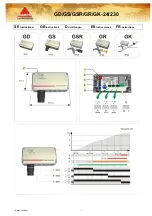
18
•
A high tone indicates a non-ferrous low-conductive target such as gold,
platinum, lead, aluminum, or stainless steel.
In addition to tonal variations, other audio anomalies (such as a nail causing a
double-beep) will assist in identifying targets. The exact responses in
Tone
mode can
be altered by the
Reject
control to increase or decrease the rejection of iron, and by
the
ATS
control to alter the audio anomalies produced by some targets.
NOTE:
The
Tone
mode is more susceptible to EMI than the
All Metal
mode
and is therefore usually noisier. There is also a slight depth loss compared
to
All Metal
mode. However, in areas with a high iron concentration the
Tone
mode may have a significant advantage.
Mute Mode
Mute
mode behaves like
Tone
mode, but low tones are suppressed. Depending
on the setting of the
Reject
and
ATS
controls, some targets that would normally be
rejected may produce a short high-tone “chirp.” This and other audio anomalies can
assist in identifying targets.
Because
Mute
mode eliminates the low-tone responses, it tends to be smoother
than
Tone
mode, especially in the presence of EMI.
Mute
mode is therefore useful in
hunting areas with a high iron concentration and noisier EMI conditions.
Volcanic Sand Mode
Volcanic Sand
mode behaves like
Mute
mode but has special timing parameters
to allow hunting areas with extreme concentrations of volcanic sand. Hot rock
responses also tend to be reduced.
Volcanic Sand
mode has lower target sensitivity
than other modes. In this mode the recommended minimum
Pulse Delay
is 9 µs and
recommended
ATS
is 8 µs. A lower
Sensitivity
may be required for good stability,
depending on ground conditions.
NOTE:
In
Volcanic Sand
mode, low-conductor targets may have a modest
reduction in depth while high-conductor targets may have a depth loss of 50%.
However, this mode allows the detector to perform well in conditions where
other detectors fail.
USER CONTROLS
(Continued)
















































